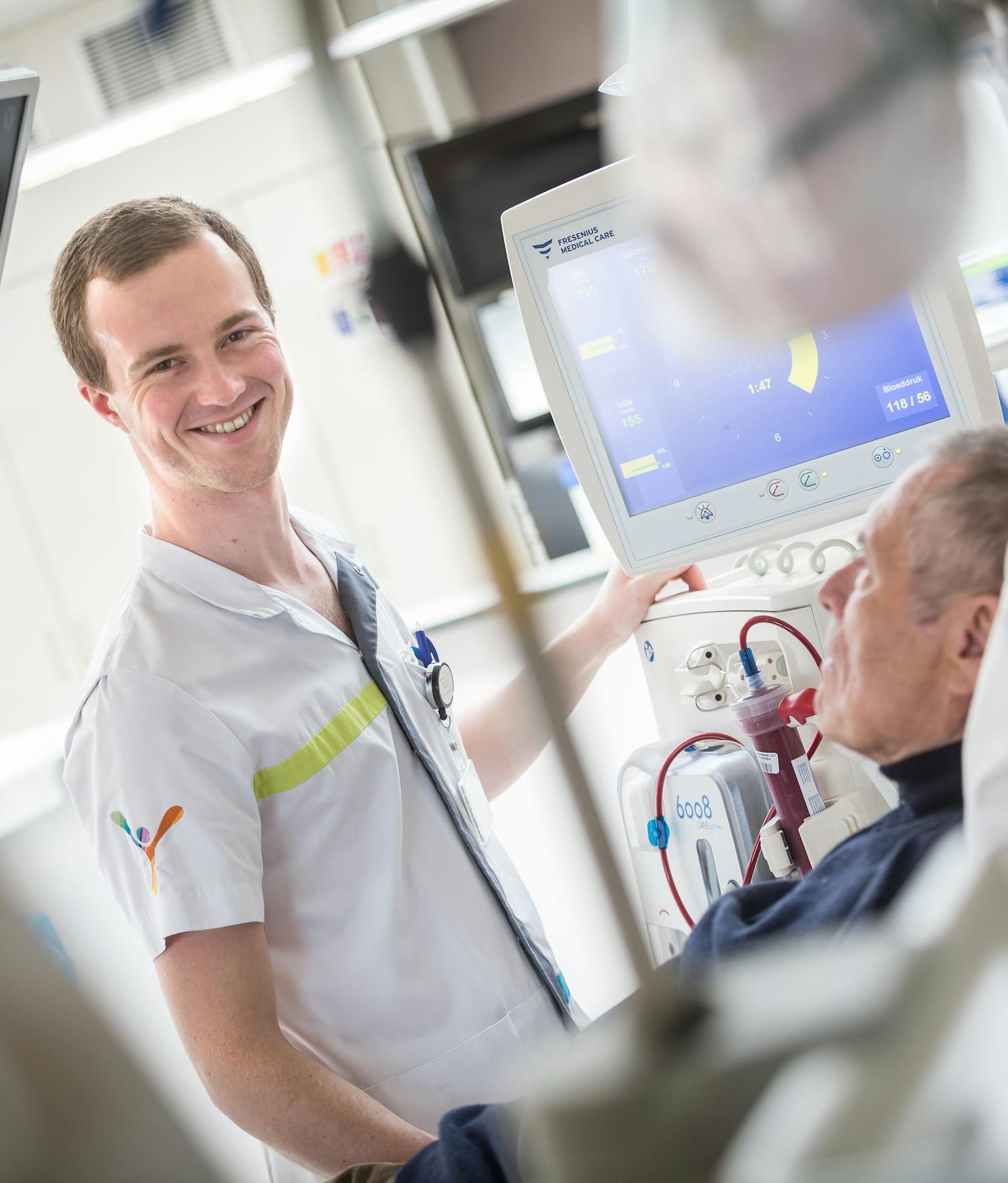
Peritoneal dialysis is a method which uses the patient’s own abdominal peritoneum as an ‘artificial kidney’.
The peritoneum is a membrane that covers the organs in your abdominal cavity. To perform peritoneal dialysis, a flexible catheter is implanted in the abdomen.
With peritoneal dialysis, you always have fluid in the abdomen. This liquid should be exchanged three to four times a day. Each fluid exchange takes half an hour. You can do these exchanges yourself, but they can also be done by a family member or a home care nurse. Between these exchanges, you are completely free. These are the manual exchanges (CAPD: Continuous Ambulatory Peritoneal Dialysis).
You can also have the exchanges done automatically by a machine at night. In this case, the fluids are prepared in the evening and the machine delivers and drains the fluids at night (APD: Automatic Peritoneal Dialysis).
The advantages of peritoneal dialysis are:
All the necessary materials to do the treatment at home in the best conditions are provided by the centre and delivered to the patient's home. The direct costs of dialysis are reimbursed by the health insurance fund and settled directly with the hospital (so the patient does not have to pay for the equipment and the possible use of a device).